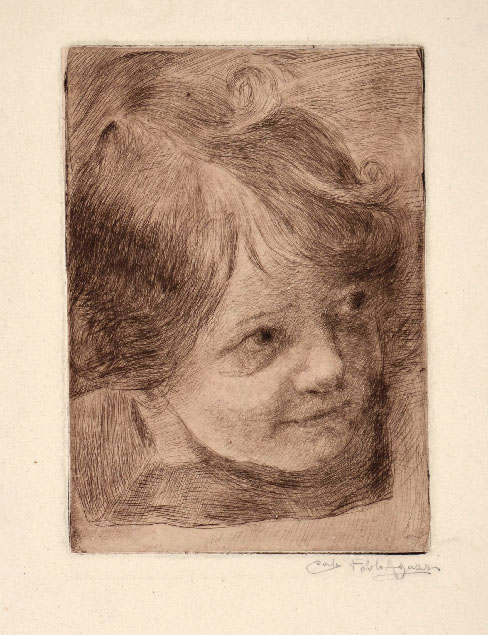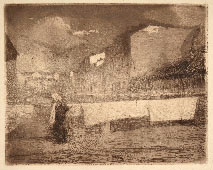(Milan 1870 - 1922)
SORRISO DI BIMBA, c. 1916
Drypoint, unknown to Mezzetti. A fine impression in sepia ink. Signed in pencil bottom right Carlo Paolo Agazzi. To the platemark 200 x 143 mm, the entire sheet measuring 310 x 243 mm. An impression of this print was exhibited in London, 1916, at the Esposizione d'incisione italiana promoted by Associazione italiana acquafortisti e incisori. Another impression is at the British Museum (Museum number 2009,7083.3)
PROVENANCE:
The painter Carlo Bellesia (Milan 1899 - 1973). At age 17, Bellesia, host of the male Orphanage of Milan (Martinitt), was hired as lithographer by Federico Marioni (Claro 1866 - Milan 1938). Marioni, himself an etcher, opened in Milan, in the last decade of the nineteenth century, a chalcographic atelier attended by many prominent artists as Conconi, Feragutti-Visconti, Russolo, Boccioni, Wildt, Grubicy, Agazzi, Ernesto Bazzaro. The activity of Bellesia at the Marioni atelier, allowed him to gather a collection of etchings by those artists.
A pupil of Giuseppe Bertini at the Brera Academy, Agazzi learned, among other things, the technique of fresco painting. He competed with Virgilio Ripari in painting flowers, and he painted so many to be called Agazzi dei Fiori or il Nuovo Scrosati. Then he devoted himself to landscape. Agazzi actively participated in the exhibitions of the Permanente in Milan and at the Venice Biennale until two years before his death. He also painted the Meeting of Garibaldi with Countess Raimondi, now in the Museo del Risorgimento in Milan. He was an excellent painter fresco and left us a superb evidence in the villa of Carlo Alberto Pisani Dossi on Como lake. Agazzi was also a printmaker, influenced by Conconi in the etchings with monotypic effects; he also dealt with extreme ease the drypoint. A member of the Associazione Italiana Acquafortisti e Incisori, he exhibited his etchings and drypoints at the Esposizione d'incisione italiana in London, 1916.


